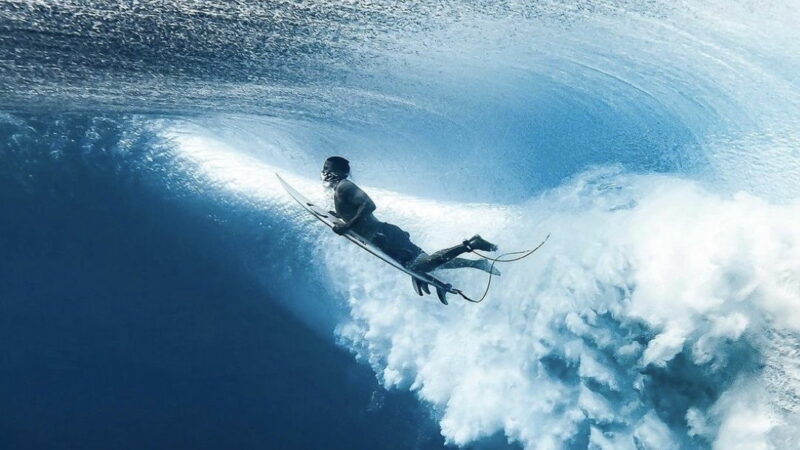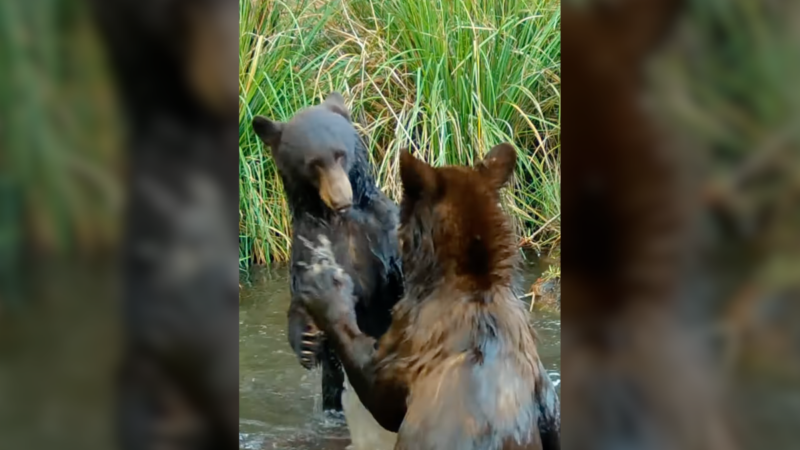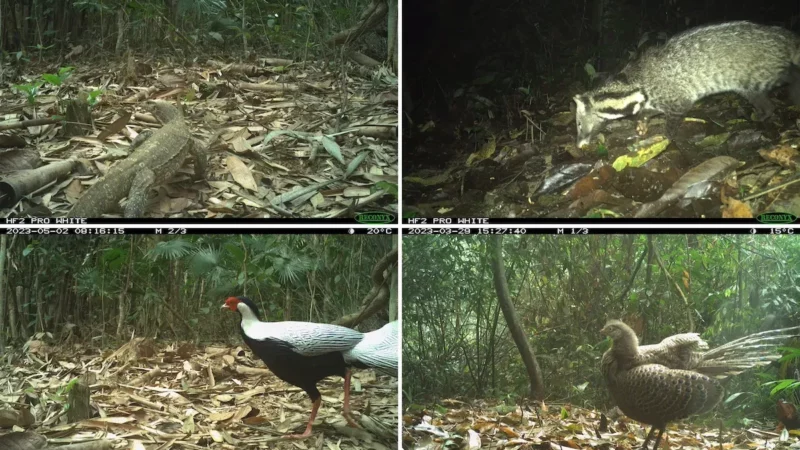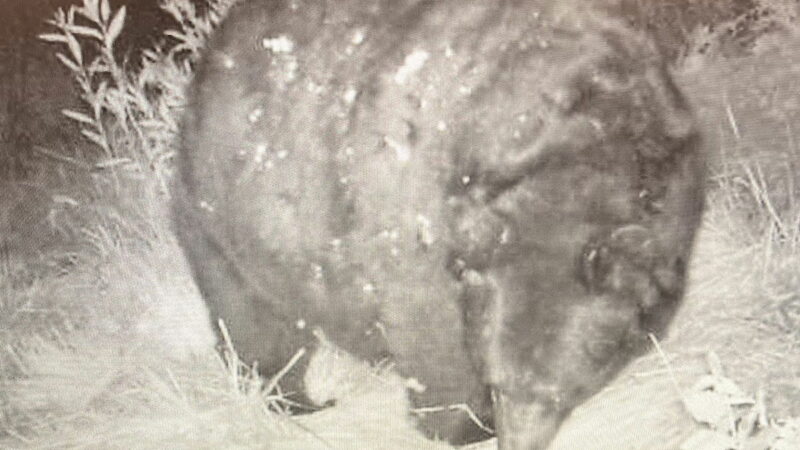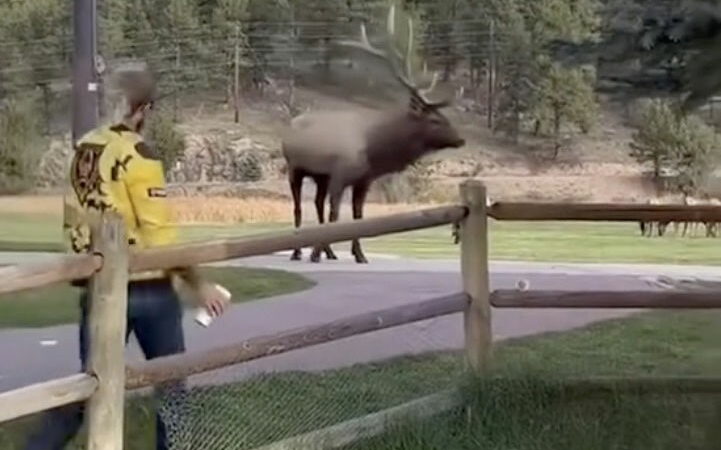100 Facts About America’s National Parks
In honor of National Park Week (April 24-28), the team here at Outdoors.com has curated an inspiring list of 100 facts and things to love about America’s treasured National Parks. Consider this as your invitation to make summer 2023 the year you get outside and explore what Wallace Stegner called “the best idea we ever had.”
1. The National Park Service was established on August 25 1916, to manage and protect the country’s national parks.
2. There are currently 63 national parks in the United States.
3. The oldest national park is Yellowstone, established in 1872. Not only was it the first national park in the U.S. but it was the first one on the entire planet.
4. The newest national park is New River Gorge National Park and Preserve in West Virginia, established in 2020.
5. National parks cover over 84 million acres across the United States and its territories.
6. The National Park Service is committed to making parks accessible to everyone, with many parks offering accessible trails, facilities, and programs. Examples Yosemite offers interpreting services for all park programs for visitors who are deaf or hard of hearing; visitors in wheelchairs can explore the Mammoth Caves on an accessible tour of the cave network; and adaptive climbing is available at Grand Teton.
7. In 2020, the Great American Outdoors Act was signed into law by President Trump, providing permanent funding for the maintenance and improvement of national parks.
8. The NPS employs over 20,000 people and has more than 246,000 volunteers contributing their time and expertise.
9. There are 12 national parks designated as UNESCO World Heritage Sites.
10. Yellowstone National Park was the first national park to be designated as a UNESCO World Heritage Site in 1978. Read our complete guide to Yellowstone National Park here.
11. Wrangell-St. Elias National Park and Preserve in Alaska is the largest national park in the United States, spanning over 13.2 million acres. Yellowstone, Yosemite – and the entire country of Switzerland could together fit inside it.
12. Gateway Arch National Park in Missouri, the “Gateway to the West,” is the smallest national park, covering just 193 acres.
13. President Gerald Ford was once a National Park Ranger. In 1936, at the age of 23, Ford spent the summer working in Yellowstone NP, including tasks such as supervising campgrounds, directing park traffic and even feeding the park’s sizable bear population.
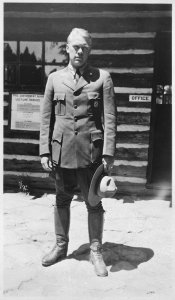
14. Denali National Park and Preserve in Alaska is home to the highest peak in North America. Denali stands at 20,310 feet. If you measure it from base to summit, it’s actually the tallest in the world – taller than even Mount Everest.
15. Badwater Basin in Death Valley National Park, California, is the lowest point in North America at 282 feet below sea level.
16. Often called Texas’ “gift to the nation,” Big Bend National Park has a large number of archaeological sites, and also has the least light pollution of any national park in the lower 48 states.
17. The tallest sand dunes in North America are found in Great Sand Dunes National Park and Preserve, Colorado and reach up to 755 feet tall.
18. Crater Lake in Crater Lake National Park, Oregon, is the deepest lake in the United States, at 1,943 feet deep.
19. The Great Smoky Mountains National Park is home to over 19,000 documented species, making it one of the most biodiverse parks in the U.S..
20. Channel Islands National Park in California is home to over 145 species of plants and animals found nowhere else in the world.
21. 14 of the 63 National Parks have been designated as International Dark Sky Parks. At parks such as Canyonlands and Death Valley, visitors can experience some of the best stargazing opportunities in the world.
22. The Old Faithful geyser in Yellowstone National Park erupts approximately every 90 minutes, shooting water up to 185 feet in the air.
23. Hawai’i Volcanoes National Park is both a UNESCO World Heritage Site, and a UNESCO Biosphere Reserves. Biosphere reserves sites for testing sustainable approaches to “social and ecological systems, including conflict prevention and management of biodiversity.”
24. Saguaro National Park in Arizona has the nation’s largest cacti, the giant saguaro, which can live up to 200 years. The tallest one recorded? 78 feet tall.
25. The Grand Canyon – located, of course, in Grand Canyon National Park – is one of the Seven Natural Wonders of the World.
26. Yosemite National Park is home to El Capitan, a 3,000-foot granite monolith that is a popular destination for rock climbers. The recent film Free Solo brought a lot of attention to the monolith beyond the climbing community.
27. Hawai’i Volcanoes National Park is one of the few places on Earth where visitors can safely witness an active volcano.
28. Arches National Park in Utah has over 2,000 natural sandstone arches, including the famous Delicate Arch.
29. The Harry Yount Award is a prestigious honor that recognizes park rangers who have demonstrated excellence in their traditional duties, as well as leadership, determination, and a sense of humor. The award is named after the first official park ranger, Harry Yount.
30. Sequoia National Park is home to the General Sherman Tree, the largest single-stem tree on Earth by volume. It’s estimated to be between 2200 and 2700 years old.
31. The Petrified Forest National Park in Arizona contains one of the largest and most colorful concentrations of petrified wood in the world, and fossils that are up to 225 million years old.
32. The Kolb brothers–Emery and Ellsworth–were pioneers in adventure photography within national parks. In 1902, they set up a photographic studio at the Bright Angel trailhead in Grand Canyon National Park, and used a small cave as a makeshift darkroom. In 1904, they built a two-story wooden structure on a rock shelf blasted out of the Canyon wall to replace the cave. The Kolb brothers documented the Grand Canyon through photography and film, promoting it as a tourist destination and contributing to the establishment of Grand Canyon National Park.
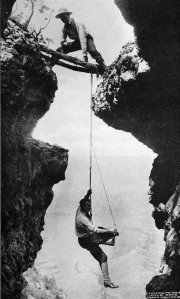
33. The sand dunes in Great Sand Dunes National Park and Preserve in Colorado are the tallest in North America, with the Star Dune reaching 750 feet.
34. Carlsbad Caverns National Park in New Mexico has more than 119 caves, including the Big Room, which is one of the largest natural limestone chambers in the world.
35. Mesa Verde National Park in Colorado is home to over 5,000 archaeological sites, including well-preserved Ancestral Puebloan cliff dwellings.
36. There are over 400 miles of roads in Yellowstone National Park.
37. There are several “fee-free” days, when entry costs are waived for all National Parks. In 2023, those days are:
• January 16: Birthday of Martin Luther King, Jr.
• April 22: First day of National Park Week
• August 4: Anniversary of the Great American Outdoors Act
• September 23: National Public Lands Day
• November 11: Veterans Day
38. Gettysburg National Military Park in Pennsylvania preserves the site of the deadliest battle of the American Civil War.
39. The Florida panther, one of the most endangered mammals in the United States, can be found in Everglades National Park and Big Cypress National Preserve.
40. The island fox, native to the Channel Islands National Park in California, is one of the smallest canid species in the world and was once listed as an endangered species.
41. The whooping crane, one of the rarest birds in North America, can be found at Indiana Dunes National Park during their migration.
42. Great Smoky Mountains National Park is one of the most visited national parks in the United States, with 12,937,633 visits in 2022.
43. Shenandoah National Park in Virginia is home to the famous Skyline Drive, a 105-mile, three-hour long scenic drive that offers breathtaking views of the Blue Ridge Mountains.
44. Glacier National Park in Montana has over 700 miles of hiking trails, including the famous 50 mile long Going-to-the-Sun Road that traverses around glacier lakes.
45. Pinnacles National Park in California is a popular destination for rock climbers of a variety of skill levels.
46. Only one National Park was established twice: Grand Teton. The park was initially established in 1929 to protect the area’s peaks, then established again in 1950 to bring it to its current size.
47. Park Ranger badges were introduced in the 1890s to represent the authority of rangers and scouts to protect wildlife in western parks. The badges have evolved over time, and you can explore their history at this NPS online exhibit.
48. The National Park Service offers a Junior Ranger Program, which encourages children to explore, learn about, and protect national parks.
49. Many national parks provide educational programs and guided tours led by park rangers and volunteers.
50. The Ahwahnee Hotel in Yosemite National Park is a National Historic Landmark and offers luxury accommodations with stunning views of the park. Presidents including John F. Kennedy and Herbert Hoover have stayed there, as have royals such as Ethiopian Emperor Haile Selassie and Queen Elizabeth and Prince Philip.
51. The Old Faithful Inn in Yellowstone National Park is the largest log structure in the world and offers visitors a unique lodging experience.
52. There are 43 types of mosquitoes found in Everglades National Park. Only 13 of them will bite humans, with most (73%) preferring the park’s cotton rat population.
53. The NPS manages 60 protected rivers and wild and scenic river segments.
54. There are more than 75,000 archaeological sites within the national parks system.
55. Colorado’s Mesa Verde is a Unesco World Heritage Site with thousands of archeological sites, dating back as far as A.D. 550 and include cliff dwellings, farming structures and masonry towers. These sites were inhabited by the Ancestral Pueblo peoples for more than 700 years.
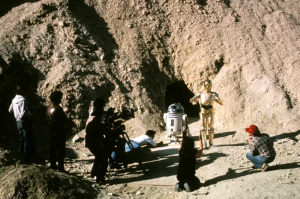
56. The very first Star Wars film, 1977’s “Episode IV: A New Hope,” was partially filmed at Death Valley National Park. The park served as the landscape for the planet of Tatooine. The crew returned a few years later to film scenes for Return of the Jedi. Filming is no longer allowed in the park.
57. Shelton Johnson, an author and longtime Park Ranger at Yosemite National Park, has become very well-known for his efforts to connect diverse communities with the outdoors and national parks. He featured prominently in Ken Burns’ documentary series about the parks.
58. President Theodore Roosevelt was an avid supporter of conservation and is responsible for the creation of five national parks, 18 national monuments, and 150 national forests.
59. President Jimmy Carter established the greatest number of national parks: 11. They include: Theodore Roosevelt National Park, Glacier Bay and Denali.
60. There are hundreds of live streaming video feeds that allow you to watch nature in a variety of national parks. Tune in here.
61. Ansel Adams, a famous American photographer, captured iconic images of Yosemite National Park and was instrumental in promoting the protection of the American wilderness.
62. The Great Smoky Mountains National Park is one of the few national parks in the United States that does not charge an entrance fee. However in March of 2023, the park did start changing for parking permits, so if you want to stop to hike, you’ll need to pay $5.
63. Death Valley Days was a long running radio and TV show that recounted true tales from the Old West, and was set in the National Park. One of the show’s many hosts was future US President Ronald Reagan. The major sponsor for the show was the Pacific Borax Company, and the company’s advertising lead was Stephen Mather, who would eventually become the National Park System’s very first director.
[embedded content]
64. The bison, America’s national mammal, can be found in several national parks, including Grand Teton, Badlands and Yellowstone, where they have lived since prehistoric times.
65. The world’s longest cave system, Mammoth Cave, is located in Mammoth Cave National Park in Kentucky. These systems are 346 miles long, with the Mammoth Dome reaching 192 feet high, and the ominous “Bottomless Pit” reaching 105 feet deep.
66. Everglades National Park in Florida is the only place in the world where alligators and crocodiles coexist. In fact, Everglades is the only place you can see wild crocs in the U.S.
67. There are over 4 million acres of designated wilderness areas within the national parks system.
68. The NPS manages 23 national scenic and historic trails, covering over 54,000 miles.
69. Grand Teton National Park is a birdwatcher’s utopia. There are over 340 species of birds in the park, and you’ll find everything from eagles to hummingbirds, pelicans to kingfishers. If you go, and can get a picture of all 340, we’ll happily give you a year’s free subscription to Outdoors+. Here’s a checklist.
70. The world’s largest gypsum dune field is located in White Sands National Park, New Mexico. What’s gypsum? It’s actually pretty fascinating stuff.
71. The NPS recommends you arrive at a park with 10 essentials, including sun protection, water and food and shelter. Here’s the complete list:
[embedded content]
72. The National Park Service manages 27 national natural landmarks, which are recognized for their outstanding geological or ecological features.
73. No reptiles can survive as far north as Denali, however there is one amphibian that can: the wood frog.
74. Acadia National Park in Maine is the first place in the United States to see the sunrise.
75. Park Prescription Day, or ParkRx Day, is celebrated annually on Earth Day. The theme is designed to showcase “the healing power of parks and the great outdoors and to show support for the growing ParkRx movement of healthcare providers referring patients to nature and parks for their health.” Special events are organized throughout the parks and by rangers and doctors.
76. The National Park of American Samoa is the most southern National Park, and the only one in the southern hemisphere. The South Pacific park boasts coral reefs, rainforests, volcanic mountains, and white sand beaches.
77. The lowest point in the Western Hemisphere is Badwater Basin, located in Death Valley National Park.
78. The photo from the cover of U2’s The Joshua Tree cover was not actually taken in Joshua Tree National Park, but at Zabriskie Point, in Death Valley.
[embedded content]
79. The state with the most national parks? That’s California, which has nine parks across nearly 10,000 square miles.
80. The mountain in Denali National Park was named Mount McKinley in 1897, after President William McKinley. A decades-long dispute of the name was resolved on August 30, 2015, when President Barack Obama directed Secretary of the Interior Sally Jewell to formally change the name of the mountain to Denali.
81. Located within Santa Monica Mountains National Recreation Area is Paramount Ranch. The ranch allows visitors to learn about the California landscape and explore some film history at the same time. Paramount Pictures leased the ranch in 1927 and began an era of film production that has included Bob Hope’s 1941 movie Caught in the Draft, the 1993-1998 series Dr. Quinn, Medicine Woman, the 1950s TV classic The Cisco Kid, and HBO’s recent dystopian series Westworld, among many others.
82. The NPS has partnered with US Park Pass to offer the “America the Beautiful – the National Parks and Federal Recreational Lands Pass”. The annual pass includes entrance fees to all parks for one personal vehicle, including rentals and RV’s and motorhomes.
83. The NPS has recently provided literary residencies to selected poets and writers, who create works inspired by the parks. You can browse their publications here.
84. The Buffalo Soldiers, who were African-American army regiments formed after the Civil War, played a significant role as some of the first park rangers in the Western United States. They were particularly known for their work as backcountry rangers.
85. The world’s largest collection of hoodoos, irregular columns of rock, can be found in Bryce Canyon National Park, Utah.
86. The NPS provides a free trip planning guide, including a checklist to help you plan your next park outing. Download it here.
87. The world record for highest air temperature was recorded at Furnace Creek in Death Valley National Park on July 10, 1913. It was a balmy 134°F (57°C).
88. The Grand Prismatic Spring in Yellowstone National Park is the third-largest hot spring in the world. It’s bigger than a football field, and just over 10 stories deep.
89. Redwood National and State Parks have served as the location for E.T.: The Extra Terrestrial, Jurassic Park, and Return of the Jedi, among many other classic films.
[embedded content]
90. Adak, Alaska is the town that is furthest (946 miles) away from any national park. The small town has a population of less than 200 people.
91. At 8000 feet deep, Kings Canyon National Park in California contains the deepest canyon in the U.S.
92. In 1933, as part of the New Deal Program aimed at lifting the U.S. out of the Great Depression, President Franklin D. Roosevelt founded the Civilian Conservation Corps (CCC). The program, also known as the C’s, permitted single men aged between 18 and 25 to participate in work programs aimed at enhancing America’s public lands, forests, and parks. Camps were built at several National Forests and National Parks, including Shenandoah in Virginia.
93. Joshua Tree National Park is larger than Rhode Island.
94. The Virgin Islands National Park is home to the famous Trunk Bay, considered one of the most beautiful beaches in the world.
95. Utah’s National Parks – Arches, Canyonlands, Capitol Reef, Bryce Canyon and Zion– are collectively known as the “Mighty Five.”
96. Did you know that your dog can also volunteer at the National Parks? As a B.A.R.K Ranger, you and your furry friends can help promote positive pet behaviors in the park to prevent incidents for future pet visitors. B.A.R.K. stands for: Bag your pet’s waste / Always leash your pet / Respect wildlife / Know where you can go.
97. The biggest brick masonry building in the Western Hemisphere is Fort Jefferson, which is situated at Dry Tortugas National Park.
98. Unlike the National Parks, which are managed by the Department of the Interior, the National Forests are managed by the Department of Agriculture. While there are some similarities between the two organizations, the National Forests have dual mandates, explained by the National Forest Foundation: “While National Parks are highly vested in preservation, barely altering the existing state, National Forests are managed for many purposes—timber, recreation, grazing, wildlife, fish and more.”
99. In 1886, the U.S. Cavalry was called in to help maintain order in the newly designated parks. Their role included helping to prevent poaching, protect the forests, and put an end to stagecoach robbery.
100. There are several National Parks with high concentrations of fossils, but Tule Springs Fossil Beds National Monument in Nevada contains the largest volume of prehistoric mammal fossils, including mammoths, prehistoric horses, lions and even camels that once roamed the lands.
Did we miss your favorite National Park fact? Or maybe you’d like to share your favorite experience exploring one of America’s National Parks? We’d love to hear from you – comment below.
Source: https://outdoors.com/facts-about-americas-national-parks/

